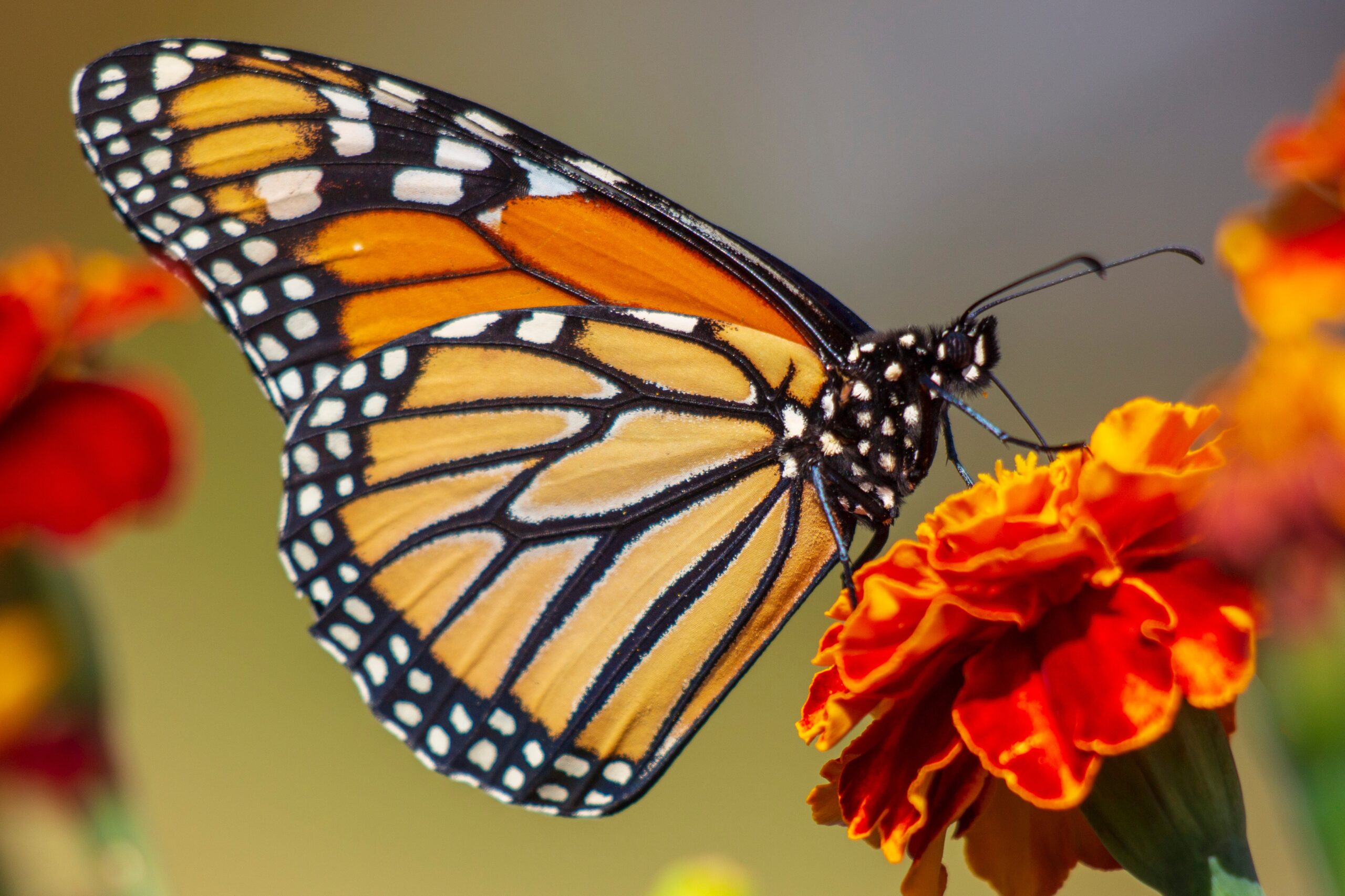Often, conservation discussions focus on rural and undeveloped areas. When cities come up, it’s largely in the context of reducing their maleffects, such as reducing storm water pollution. But, as two recent studies show, cities present overlooked conservation opportunities. Capitalizing on these opportunities, however, requires making habitat an asset to urban property owners and eliminating local regulations that forbid letting native plants grow.
“For a very long time, cities have essentially been written off,” said Abigail Derby Lewis, a senior conservation ecologist at the [Field] museum who helped write one of the studies. But cities are “very undervalued and under-recognized for the role that they play in wildlife conservation” Lewis added. “This research really shifts that narrative.”
The two studies, published last month in Frontiers in Ecology and Evolution, conclude that cities may be the key to conserving pollinator species, like the monarch butterfly currently being considered for protection under the Endangered Species Act.
This is because cities contain an abundance of overlooked green space, like yards, gardens, and medians, where milkweed and other plants that provide habitat could be planted. And these areas could provide this habitat at relatively low cost, since planting native plants would not mean taking these areas out of other productive uses (unlike, for instance, converting agricultural fields to milkweed). According to one of the studies, cities could provide up to 30% of the 1.8 billion milkweed plants believed to be required to conserve the monarch, despite making up only 3% of the nation’s landmass.
Seizing this opportunity, however, means convincing city dwellers that they would benefit from creating this habitat. This is likely easier to do in the case of the monarch than other pollinators, like bees or beetles, since having butterflies around is itself a benefit to many. Monarch supporters have also sponsored milkweed giveaways, thereby lowering the costs for homeowners to plant butterfly gardens.
“Certainly having the term ‘weed’ in the name of milkweed—which isn’t a weed—has not helped the reputation of these superstar native plants,” says Derby Lewis. Given that a name change to Monarch Flower is unlikely, a shift in public perception of what is beautiful and appropriate in home landscaping is needed, she said.
Another challenge is that many local ordinances limit departures from the standard grass lawn. In Avalon, New Jersey, for instance, the city forbids homeowners growing native plants more than a few inches tall. It took one homeowner to court over her Virginia creeper, a vine that provides habitat to bees and birds.
New Jersey has proposed a bill that would allow landowners to certify their property as wildlife habitat through a state agency or environmental nonprofit. Certification would immunize the habitat from local ordinances like Avalon’s. The certification process could also make it possible to provide participating landowners additional positive incentives to create habitat. Environmental nonprofits, for instance, could provide a small subsidy if landowners create the most beneficial type of habitat for their area.
Cities hold a lot of potential for creating environmental benefits, including habitat. Unlocking that potential, however, requires not only creating incentives for landowners to provide these benefits but also eliminating regulatory barriers that restrict landowners to stereotypical lawns.




